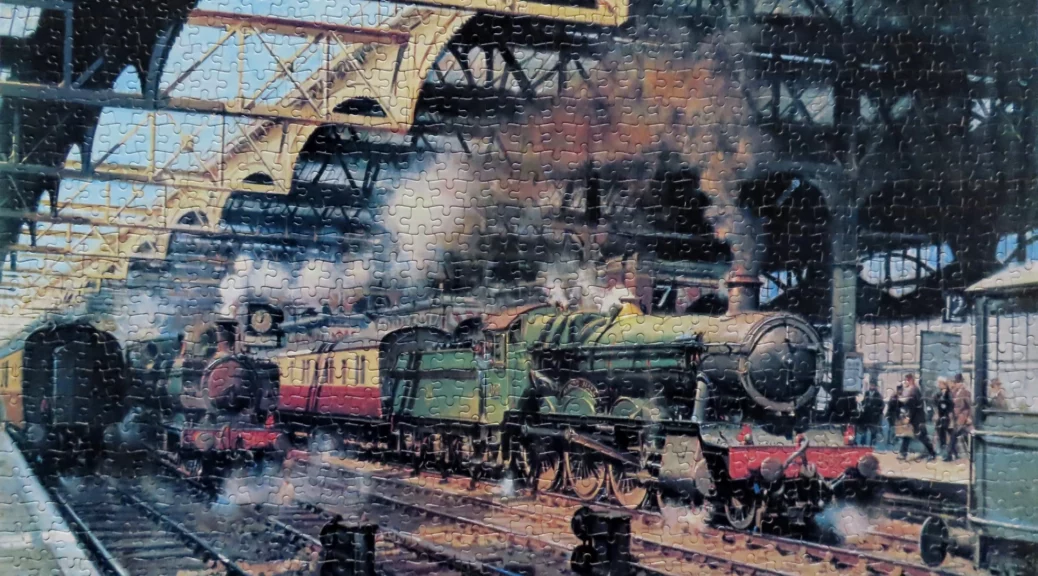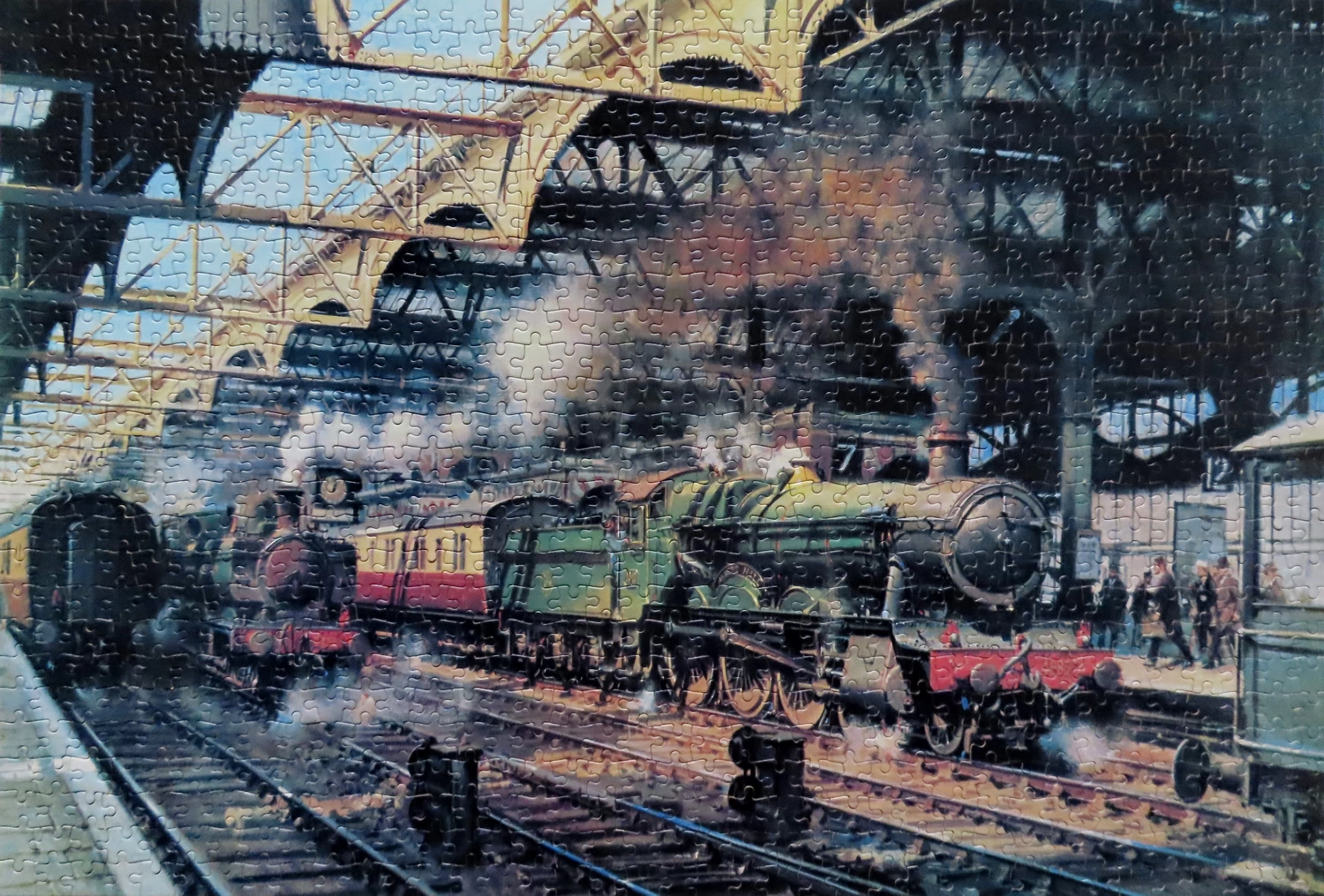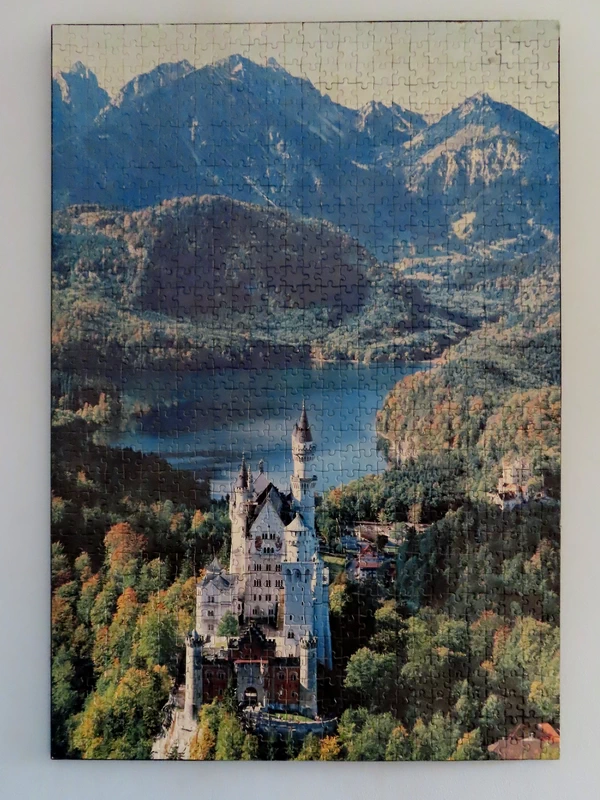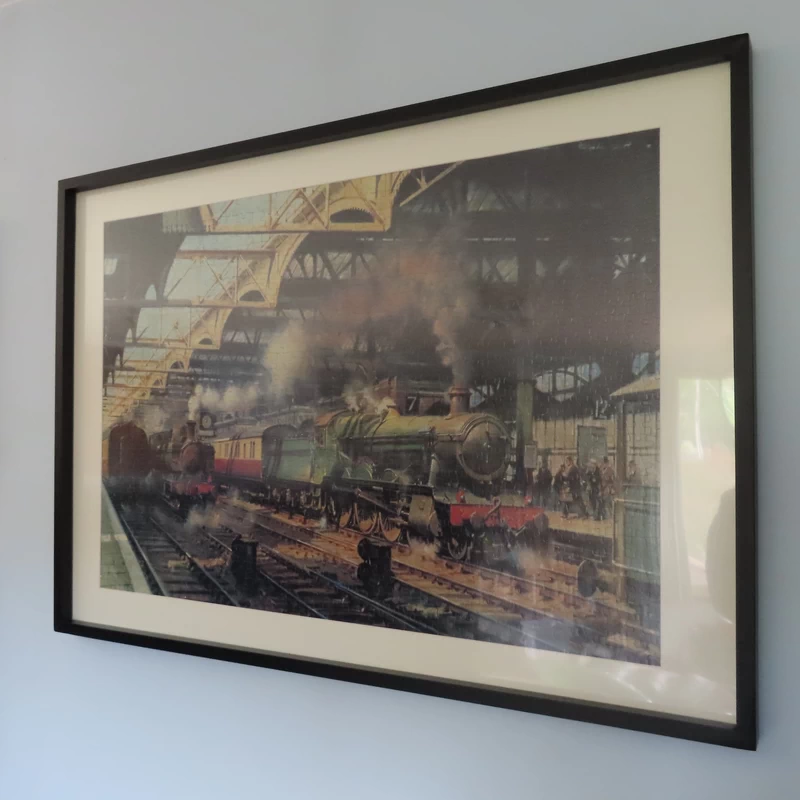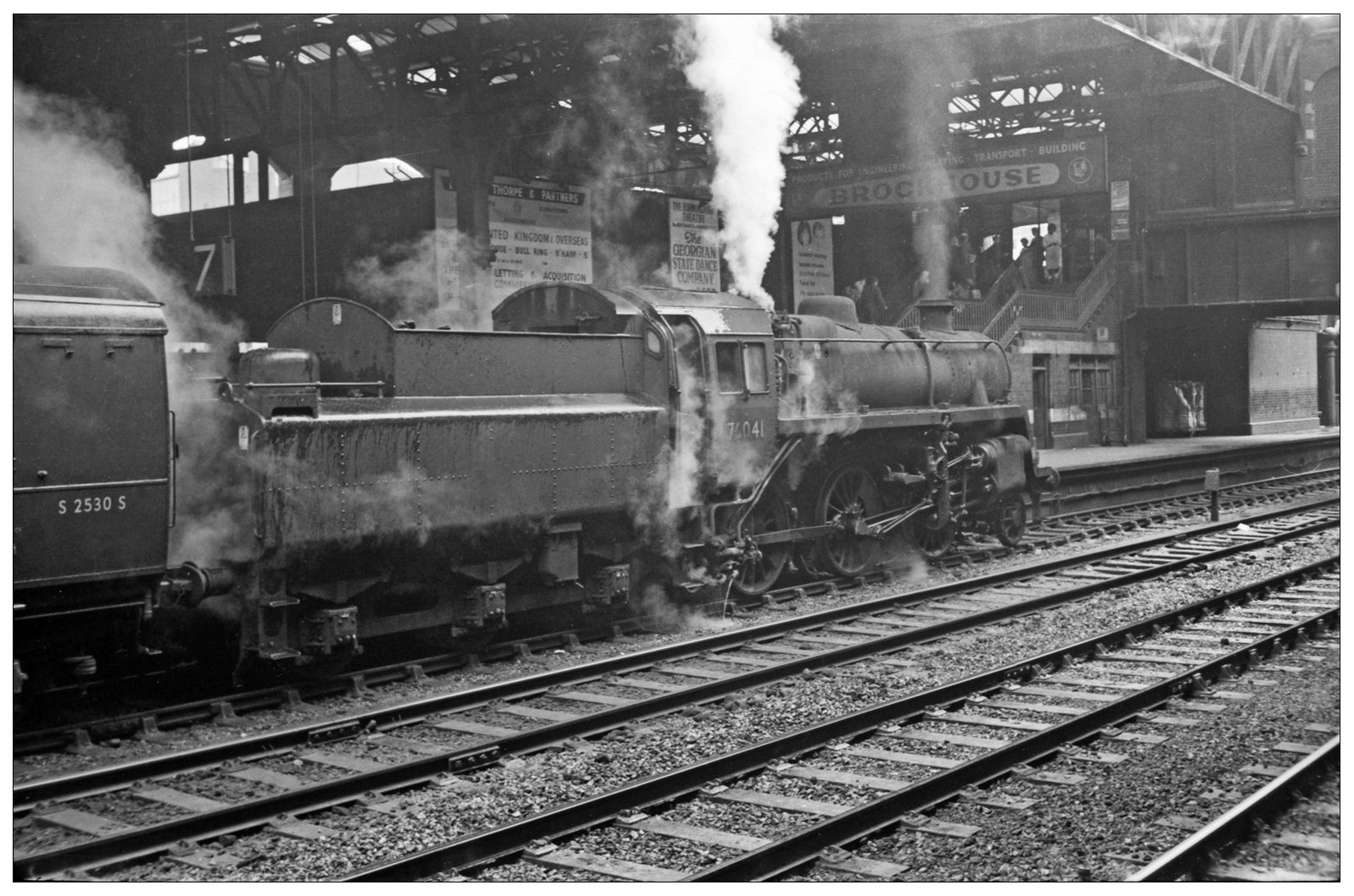A difficult puzzle to complete of a painting of an impressive but now much changed Snow Hill Station in Birmingham, UK.
The Jigsaw Puzzle
I don’t recall buying this 1000-piece jigsaw puzzle, and it was given to me because of my interest in trains. The box isn’t informative, missing are the dimensions (725mm x 493mm) and who even painted the original. Using the box title “Snow Hill Station” a quick internet search revealed it was a painting by Terence Cuneo.
Jigsaw Assembly
The boys made a good start getting nearly all the edge done and some of the details in from the edge. But after hitting the many dark areas, they gave up. Making it difficult were the many ambiguous joins.
I decided to continue with it. While I love the painting, it’s not an easy puzzle to assemble as the image doesn’t have many clues. Many times, I thought a piece was missing, but it eventually turned up.
Pieces that make up the brass chimney I thought would be obvious but turned out to be exceedingly difficult to find. Often a line would stop with a piece, putting doubt if the join was correct.
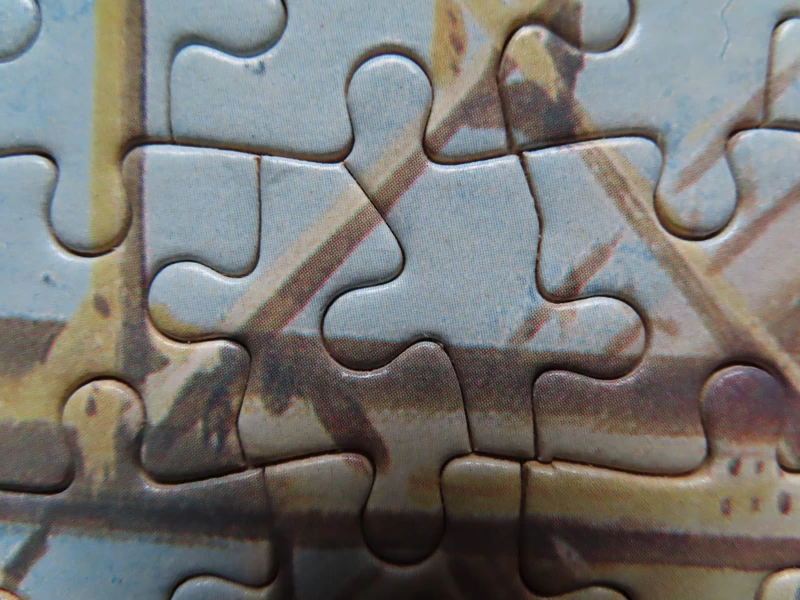
Jigsaw Puzzle “Easter Eggs”
Not obvious from the box image and only becoming apparent when doing the puzzle are the presence of two mice, one on the first ground signal and the other perched on the guard’s van step.
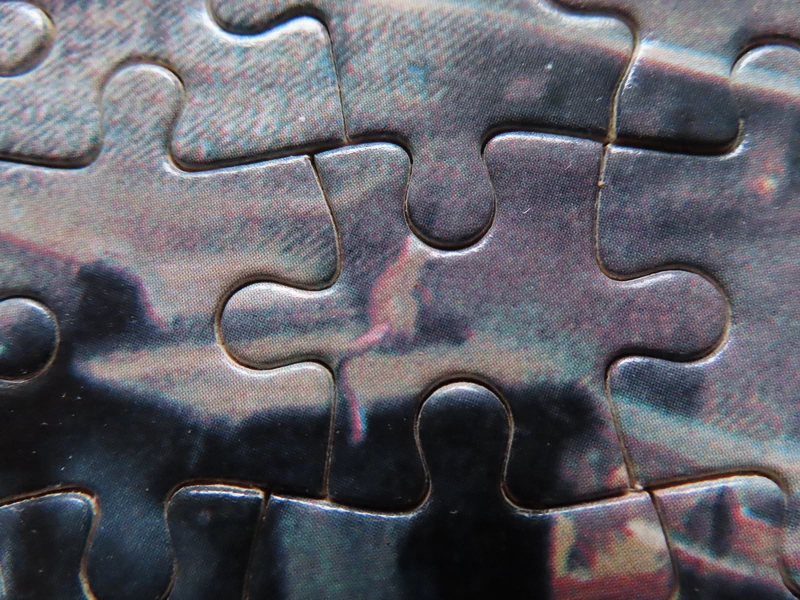
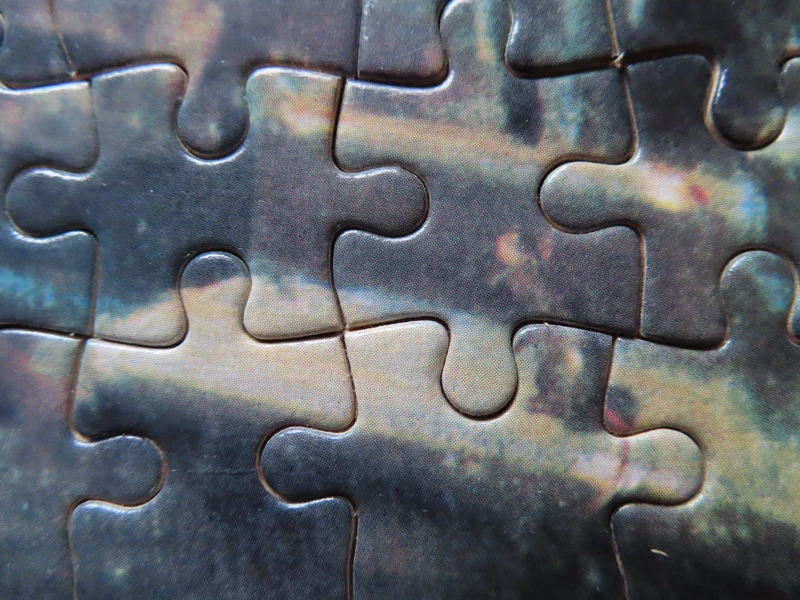
Reading about the painter Terence Cuneo reveals that in addition to painting railway subjects, he was also fond of painting mice.
Final Pieces
Even as the puzzle got down to the last thirty pieces, I had doubts it was complete. I decided that if complete it would get framed, otherwise into the bin. It would be just too frustrating to assemble it again.
Due to the bad cut of the pieces, there were many errors, with some pieces placed no where they should have been.
Although it was a difficult puzzle that was started in August 2020 during the Covid-19 lockdown, placing the last few pieces, after rearranging some, was a most satisfying experience. It was good to finally get it done over a year later in November 2021. Next, onto gluing and framing it.
Framing the Jigsaw Puzzle
Gluing was done with Ravensburg Puzzle Conserver. This special puzzle glue allows the puzzle to be stood up or hung on a wall. It can also be carefully taken apart.
The glue is over twenty years old, having been used to preserve a Neuschwanstein Castle jigsaw by Ravensburg. This puzzle was glued to a plywood sheet, which is an inexpensive way to mount your puzzle on a wall.
The first powder mix was lumpy, but the next one was done adding a little powder whilst stirring was much better.
Next, wax paper was slid underneath the puzzle with about 15cm of overlap to prevent glue getting onto the puzzle board. After a quick going over with a rolling pin to ensure that the pieces were flat, glue was applied and spread evenly over the picture side. I used too much here, and it’s best to only apply as much is needed to cover the puzzle and get into the joins.
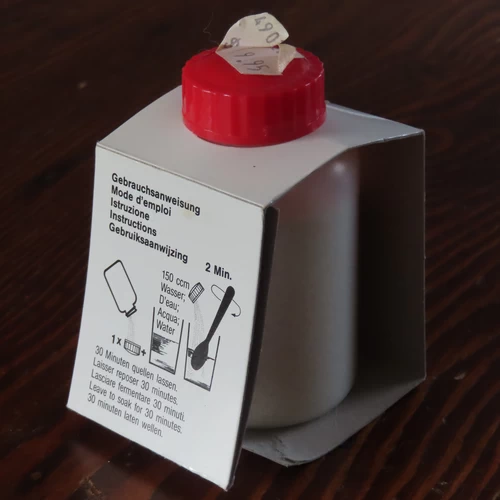
As the glue dried, the puzzle started to bow. This was fixed with another layer of waxed paper, with some heavy books on top. Even after it was dry three hours later, the puzzle bowed again, possibly because of the temperature change. So, the book weights were left in place overnight.
An inexpensive A1 sized frame was bought for under A$45 and the matt surround was re-cut with a mitre cutter to the dimensions of the puzzle, allowing for a 5mm overlap all around.
The puzzle was carefully placed on the frame backing, then the matt surround placed on top. The puzzle was carefully positioned to match the surround, and next the frame and transparent plastic cover was placed on top, and the back secured to the frame.
I used tape to hold the puzzle in place, but this quickly failed, causing the puzzle to slide down. So, the assembly was taken apart again, and some surplus matt material was hot glued to the matt surround all around to prevent the puzzle moving about.
Painting and Artist Background
While researching about the puzzle’s painting background, I learnt more about the talented artist and found some photos of Snow Hill station in its prime.
Terence Cuneo, the master painter
The creator of over nine thousand works of art, including 2000 paintings.
From A short Biography by Carole Cuneo, https://terencecuneo.co.uk/?page_id=5, viewed 17-Aug-2021.
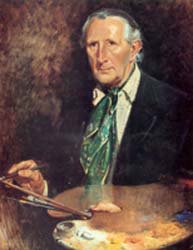
Terence Cuneo is a respected name among railway minded folk in this country (and many countries overseas) but to me, as a child, he was my beloved dad. If you were to ask me what it was like being an artist’s daughter, my reply could only be that it was brilliant!
Family life at home was so exciting, because we never knew what my father was going to do next. When we were children, he made my sister & I wonderful toys such as a life-size roundabout, which stood in the garden for years.
Then there was a large pedal car which seated two children, like a racing car. However, the most exciting thing was the Gauge 1 model railway that ran around our garden, through tunnels and over bridges, which caused terrific excitement for family and friends of all ages.
……. ” It was wonderful” …… these are indeed cherished memories.
That my father loved painting was always evident to my sister and I. Let me open up a little family secret for you. At the end of along day’s painting, he would haul his canvas to our bathroom and prop it against a wall, before relaxing in the suds with a glass of whisky, casting a leisurely but critical eye over his work. His meticulous, indeed uncanny, eye for detail made him a harsh self critic; Cuneo the artist was not easily pleased! But his love of painting was equally evident in the countless works he created, and never more so than in his railway paintings.
Indeed, my father’s railway art is a dramatic history of the genre itself. He was a man blessed with dimensional thinking on a grand scale, and he was prolific – I doubt if even he could have told me exactly how many trains he had painted. To this day, I am surprised (not to mention touched) at how many unlikely establishments and homes boast a Cuneo train on the wall.
But it was not just trains, which fascinated my father. He had a natural affiliation with engineering subjects – it would not be an exaggeration to say he felt a genuine passion for huge, powerful machines of any kind. Cars, jet engines, aircraft, tanks and other military machines – they were all grist to his mill and he loved them all. But this passion found particular and very special expression in his many paintings of not just locomotives, but the railway as a whole (especially its great bridges) and the men who worked the trains. His work has been used in every conceivable manner, from book jackets and model railway catalogues, to posters and jigsaws and even Royal Mail postage stamps!
As you look at these canvasses I am sure, like me, you will be struck by the vibrant living quality they possess. Indeed, my father’s life was one long adventure, and his swashbuckling spirit shines through in his paintings. His uncompromising determination to ‘get it right’ meant that he sometimes took dreadful personnel risks for his art, whether hanging out of helicopters, balancing precariously on railway bridges or doing express trains between tracks of a busy main line.
My father had a very exciting life, and his artistic talents attracted attention along the length of Whitehall and even Buckingham Palace. He was the official artist for the Coronation painting, for Queen Elizabeth II, in 1953 and this kind of ceremonial work meant that as children we were sometimes honoured to pose in all sorts of ermine robes and crowns while he sketched!
His love of the ‘iron’ horse was matched by an admiration for the four legged kind too, and he was commissioned by the Queen to paint regal equestrian portraits. There probably isn’t a military mess-room in the country which does not have at least one (and probably more!) of his paintings displayed on the walls.
The Railway Station

More information
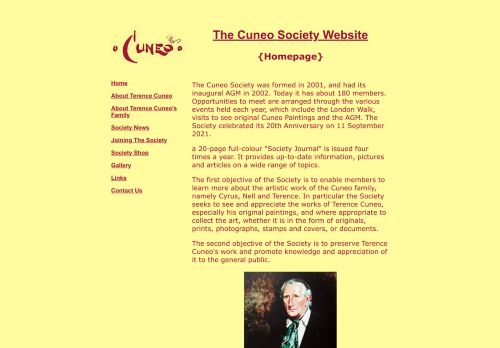 |
Cuneo SocietyThe Cuneo Society was formed in 2001, and had its inaugural AGM in 2002. It closed down in late 2021. |
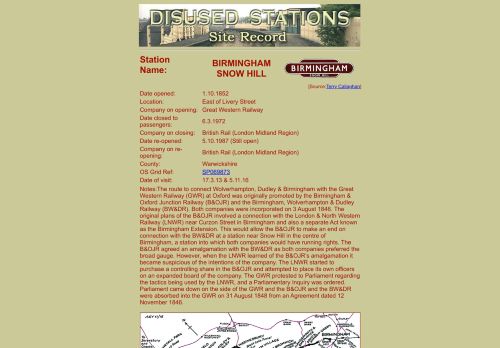 |
Snow Hill Station HistoryThe interesting and sometimes controversal history of the railways involved with Snow Hill Station. |
 |
Snow Hill station, BirminghamSnow Hill station photos |
 |
TERENCE TENISON CUNEO | Terence CuneoTerence Cuneo is a respected name among railway minded folk in this country (and many countries overseas) but to me, as a child, he was my beloved dad. If you were to ask me what it was like being an artist’s daughter, my reply could only be that it was brilliant ! |

